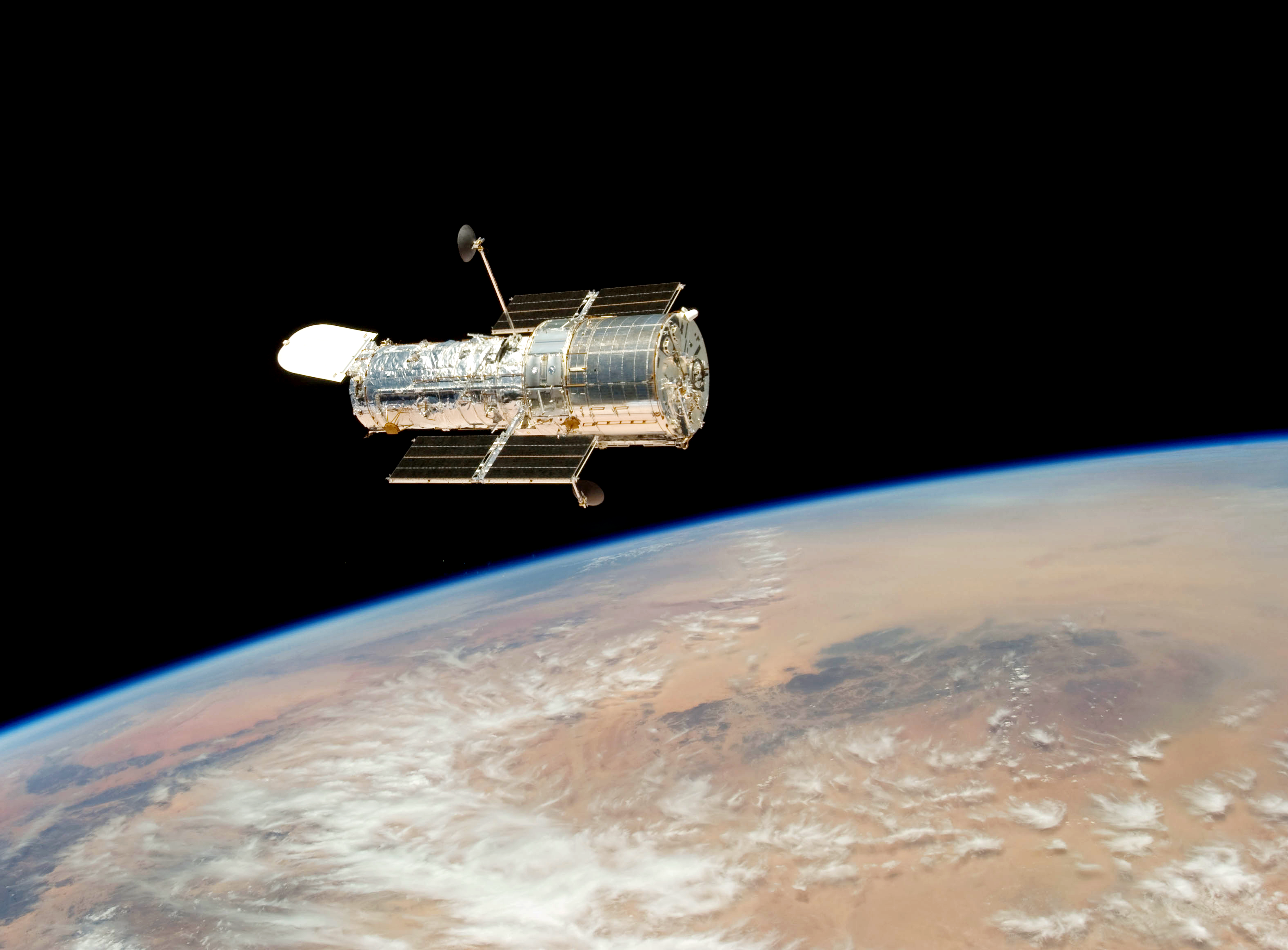

The story of the Hubble Space Telescope begins at the dawn of the space age and continues to this day.
In 1946 the American astronomer Lyman Spitzer described two advantages that a space-based observatory would have over ground-based telescopes. First, the angular resolution (the smallest separation at which objects can be clearly distinguished) would be limited only by diffraction of the telescope, rather than by the turbulence in the atmosphere, which causes stars to twinkle, known to astronomers as seeing.
To learn more about the effect of the Earth's atmosphere and diffraction on astronomical observations click here.
Second, a space-based telescope could observe infrared, ultraviolet, and x-ray light, which are mostly blocked by the atmosphere of Earth.

The opacity - the fraction of light blocked - of the Earth's atmosphere. The atmosphere is mostly transparent in visible and radio wavelengths. In the X-ray, ultraviolet, and (most of) the infrared the atmosphere is opaque, meaning we need to go into space to do astronomy at those wavelengths. Credit: Stephen Wilkins.
In 1962 both the US and UK launched orbiting solar telescopes, the Orbiting Solar Observatory (OSO) and Ariel 1 respectively. These were followed, beginning in 1966 by the US-led Orbiting Astronomical Observatory program (OAO).
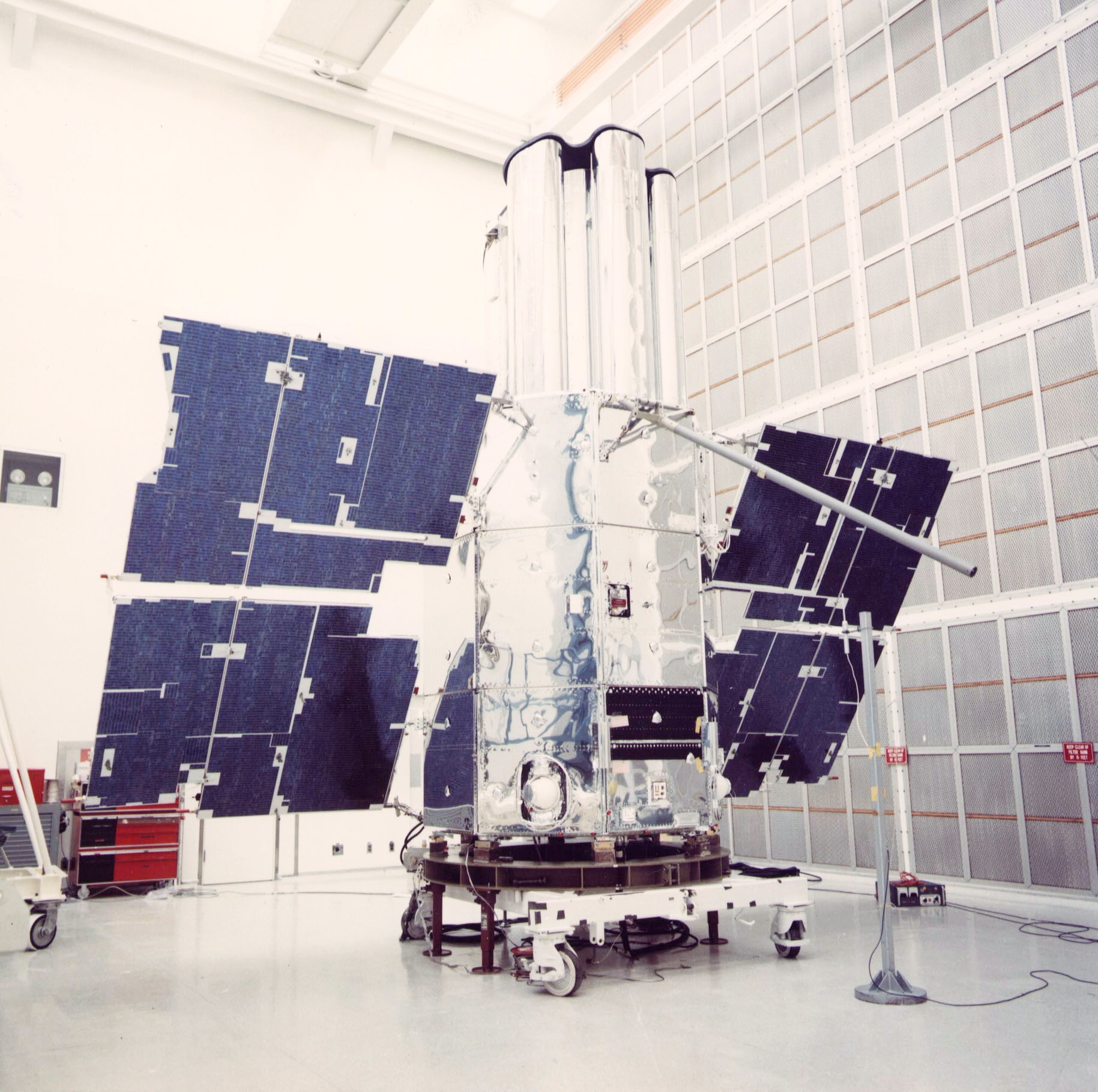
OAO-3 - shown left in its clean room - was launched in 1972, and proved to be the most successful of the OAO missions: it was a collaborative effort between NASA and the UK's Science Research Council, and carried an X-ray detector built by University College London's Mullard Space Science Laboratory in addition to an 80 cm UV telescope built by Princeton University.
Credit: NASA
The OSO and OAO missions demonstrated the important role space-based observations could play in astronomy. In 1968, NASA developed firm plans for a space-based reflecting telescope with a mirror 3 m (9.8 ft) in diameter, known provisionally as the Large Orbiting Telescope or Large Space Telescope (LST), which would become Hubble, with a launch slated for 1979. These plans emphasized the need for crewed maintenance missions to the telescope to ensure such a costly program had a lengthy working life, and the concurrent development of plans for the reusable Space Shuttle indicated that the technology to allow this was soon to become available.
Unfortunately LST struggled to attract political support and crucially funding. Public spending cuts in the US led to Congress deleting all funding for the project in 1974. In response to a nationwide lobbying effort eventually the US Senate agreed to half the budget that had originally been approved.
The funding issues led to a reduction in the scale of the project, with the proposed mirror diameter reduced from 3 m to 2.4 m. These budgetary concerns also prompted collaboration with the European Space Agency (ESA). ESA agreed to provide funding and supply one of the first generation instruments for the telescope, as well as the solar cells that would power it, and staff to work on the telescope in the United States. Congress eventually approved funding of US$36 million for 1978, and the design of the LST began in earnest, aiming for a launch date of 1983.
In 1983, the telescope was named after Edwin Hubble, who confirmed one of the greatest scientific predictions of the 20th century, made by Georges Lemaître, that the Universe is expanding.

Modern observatories, including both ground and space based observatories, are formed of 4 parts: the telescope - typically a series of mirrors, the instrumentation (cameras etc.), the support structure, and crucially the telescope's location.

Credit: NASA, Stephen Wilkins.

Optically, like most modern large professional telescopes, Hubble is a Cassegrain reflector featuring two hyperbolic mirrors, with a primary mirror size of 2.4m. While known for good imaging performance over a wide field of view, the mirrors have to be made to a precise shape making them hard to fabricate and test, as NASA would discover after launch.
Like the optical assembly, the spacecraft in which telescope and instruments were to be housed was another major engineering challenge. The spacecraft has to withstand frequent passages (every roughly 96 minutes) from direct sunlight into the Earth's shadow, causing rapid major changes in temperature.
At launch, Hubble carried 5 instruments, including imagers and spectrographs sensitive to visible, ultraviolet and near-infrared light.
What makes Hubble a unique visible light observatory is its location above (most of) the Earth's atmosphere. This allows Hubble to avoid the negative effects of the atmosphere, including the absorption of light (particularly in the near-IR and ultraviolet) and seeing (the blurring effect of the atmosphere). Despite a modest mirror size by modern standards, Hubble can see fainter objects and in greater detail than contemporary ground-based visible observatories.
Hubble orbits the Earth approximately 550km above the Earth's surface, and orbits once every 95 minutes. While above the majority of the Earth's atmosphere the remaining tenuous atmosphere is enough to cause a drag effect resulting in Hubble's orbit slowly decaying over time.
To ensure a long lifetime Hubble was designed to be deployed and be serviceable by the Space Shuttle. As part of this servicing, instruments and other spacecraft systems could be repaired or upgraded and Hubble's orbit could be periodically boosted.
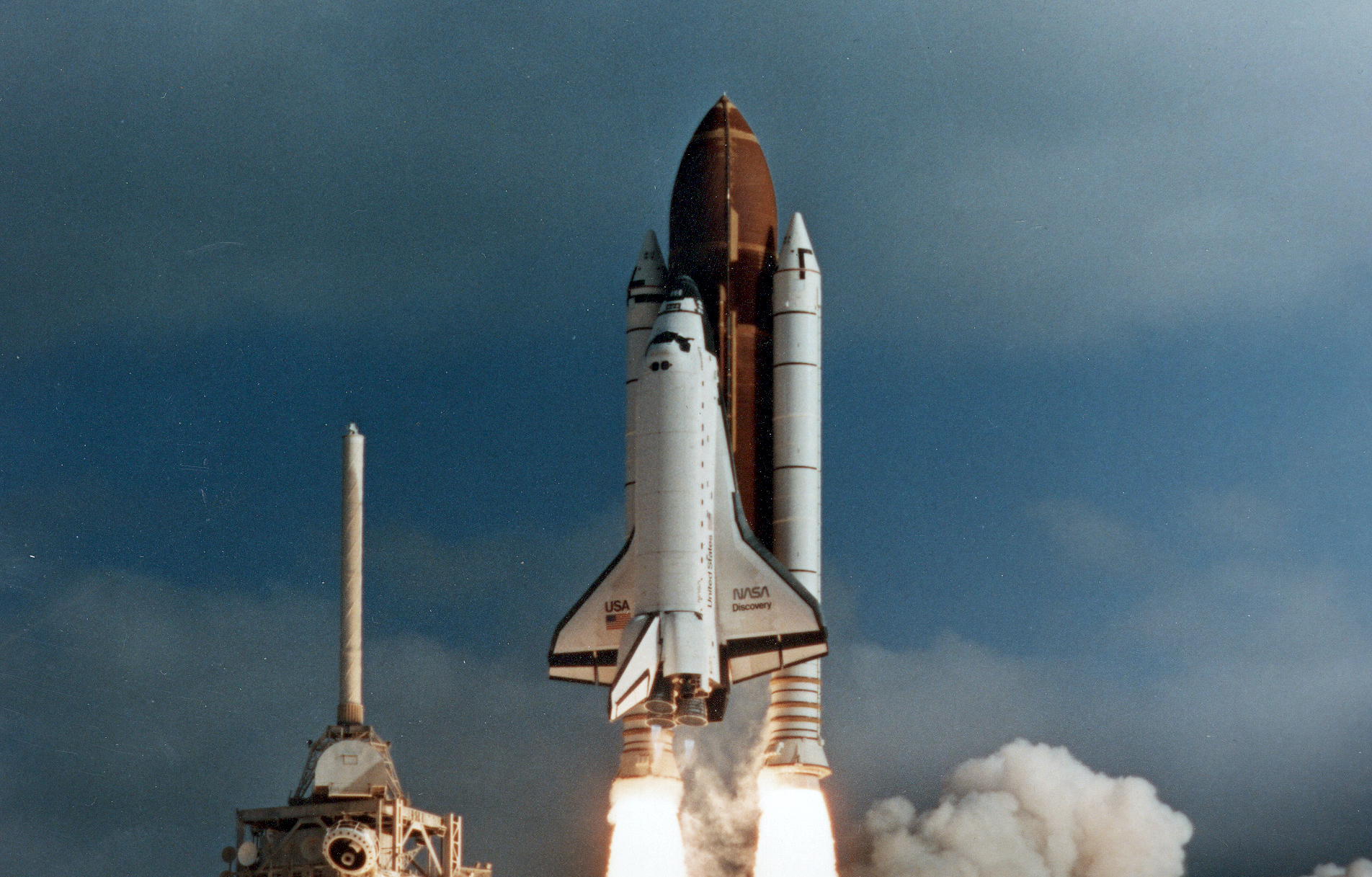
Following the resumption of shuttle flights in 1988 after the Challenger disaster, the Hubble Space Telescope was finally launched during the STS-31 mission on the Space Shuttle Discovery, on April 24, 1990.
Within weeks of the launch of the telescope, the returned images indicated a serious problem with the optical system. Although the first images appeared to be sharper than those of ground-based telescopes, Hubble failed to achieve a final sharp focus and the best image quality obtained was drastically lower than expected.
Analysis of the flawed images revealed that the primary mirror had been polished to the wrong shape. Although it was believed to be one of the most precisely figured optical mirrors ever made, smooth to about 10 nanometers (1/10,000 the width of human hair), the outer perimeter was too flat by about 2200 nanometers (about 1/50th the width of human hair, or 1/450 mm or 1/11,000 inch). This difference was catastrophic, introducing severe spherical aberration, a flaw in which light reflecting off the edge of a mirror focuses on a different point from the light reflecting off its center.
Foruntately Hubble was always designed to be servicable by the Space Shuttle and the first servicing mission was already scheduled for 1993. Service Mission 1 (STS-61) flew aboard Endeavour in December 1993, and involved installation of several instruments and other equipment over ten days. Most importantly, one of the instruments was replaced with the COSTAR corrective optics package and the Wide Field and Planetary Camera was replaced with the Wide Field and Planetary Camera 2 (WFPC2) with an internal optical correction system. The mission was a complete success and together these systems dramatically improved the sharpness of Hubble's images - use the slide below to see a comparison of images taken before and after.
Image of the galaxy M100 before and after the first servicing mission.
Use the slider to compare the images before and after the installation of COSTAR and WFPC2 during Servicing Mission 1.
Credit: NASA, ESA, STScI and Judy Schmidt
From 1997 to 2009 Hubble was serviced an additional 3 times. During these missions new instruments were installed, repairs were made, and Hubble was typically boosted to a higher orbit to address the orbital decay caused by atmospheric drag. These missions continued to confirm Hubble as the most advanced visible light observatory.
Hubble was due to be serviced a fourth time in 2003, however the Columbia disaster in 2003 led to the mission's cancellation - it was decided that all future Space Shuttle flights could only go ahead if the safe haven of the International Space Station could be reach, something that was impossible from Hubble.
However, due to lobbying from astronomers, public support, and changes in leadership at NASA a crewed mission was eventually approved. During this final servicing mission, which took place in 2009, Hubble recieved several repairs and new instrumentation, including its most advanced camera: Wide Field Camera 3 (WFC3).
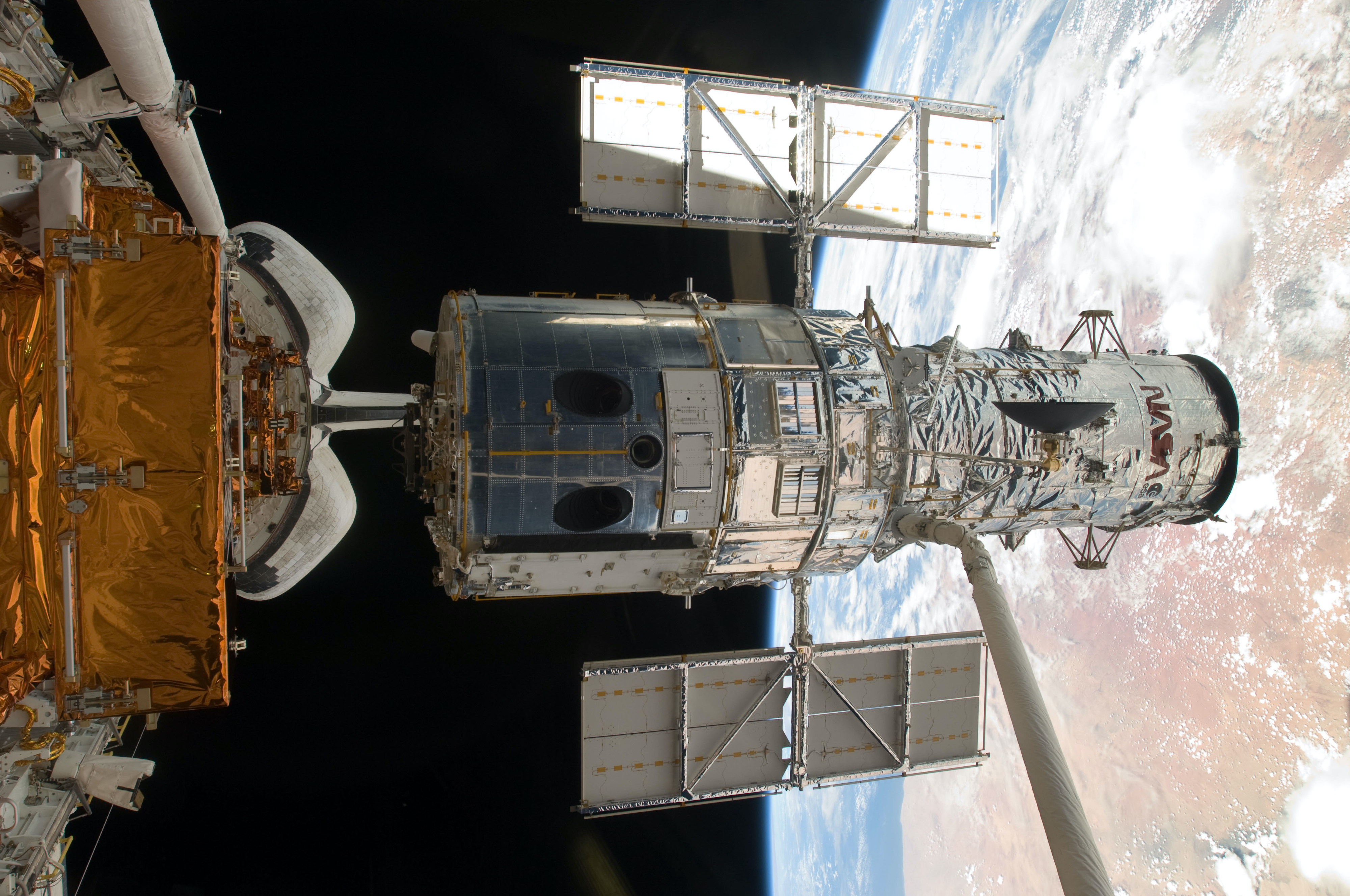
Hubble's five servicing missions have allowed it to maintain its position as the world's most advanced visible light observatory. Even now, Hubble remains one of the most in-demand facilities with thousands of scientists applying every year to use it.
Today Hubble has the capability to obtain imaging and spectroscopy across the entire visible spectrum, much of the ultraviolet, and some of the infrared.
One of the enduring legacies of Hubble is how it has been used to capture the imagination of people all over the world. Part of this is due to the fantastic array of images Hubble has captured. A comprehensive catalogue of images can be found on the ESA Hubble page.
To learn more about how spectacular colour images are produced by Hubble click here.
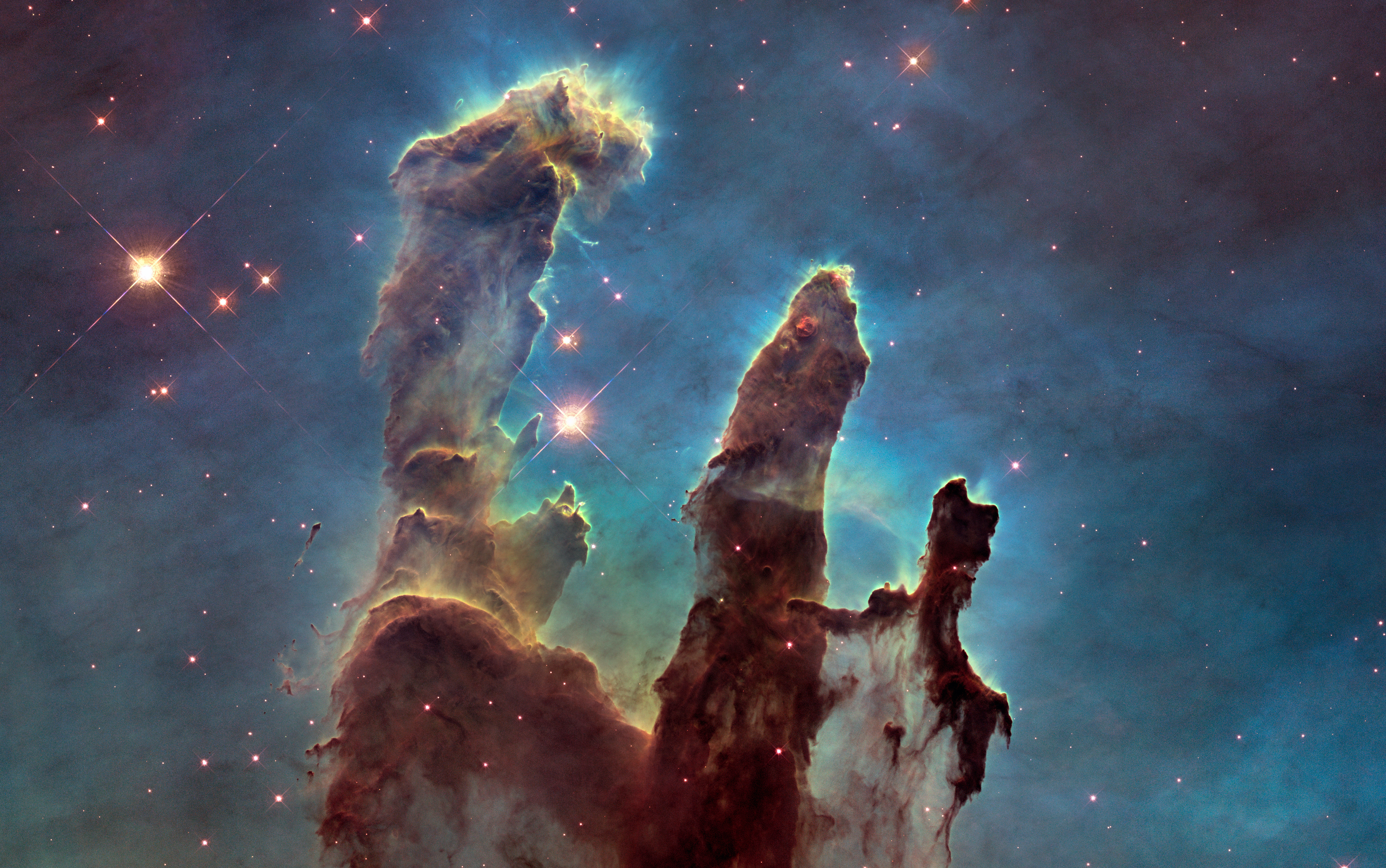
Hubble unique position above the Earth's atmosphere combined its with wide range of capabilities - extending from the ultraviolet to the infrared - means that it has been used to study a wide range of phenomena. These range from the study of bodies within our own Solar System, the atmospheres of alien planets, to (almost) the first galaxies to form in the Universe. Here are some of Hubble's many exciting discoveries:
Unlike robotic interplanetary spacecraft, which are often limited to single Solar System targets and are able to observe an object only over relatively short timespans, Hubble has been able to continuously monitor multiple Solar System phenomena over much of its 31+ year lifetime.
This has allowed us to capture gigantic swirling storms, breathtaking auroras, and the changing seasons on the giant planets, observe cold and distant objects in the outer Solar System, and witness rare events such as cometary activity, planetary impacts, and even interstellar objects briefly passing through our Solar System.
Hubble’s strength is in its longevity, allowing us to move beyond mere snapshots of individual worlds, advancing our understanding of our dynamic and ever-evolving Solar System.

Hubble has observed the changing seasons on Uranus for more than a quarter of a century (around one Uranian season), helping us to bridge the gap between the Voyager-2 encounter during southern summer, and the present-day northern spring. We see the banded structure, sporadic clouds and storms, and the seasonal formation of ‘polar caps’ of reflective aerosols. This false-colour image uses an orange (619nm) filter, and the series of images was constructed using both WFPC2 (before 2009) and WFC3 (after 2009).
Use the slider below the image to see Uranus at different times.
Credit: NASA/ESA/Univ. Leicester/L.N. Fletcher
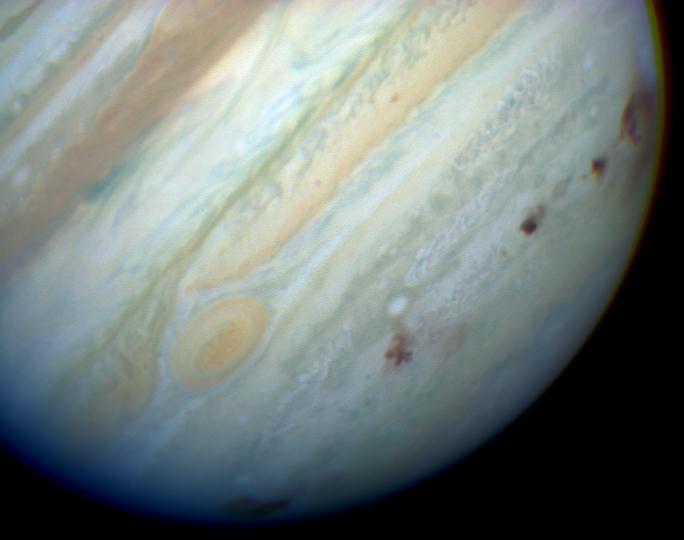
Perhaps the most famous rare event was collision of Comet Shoemaker–Levy 9 with Jupiter in 1994. While the impacts themselves were not visible from the Earth, Hubble was able to observe the impact sites of the comet fragments, as shown on the left.
Credit: Hubble Space Telescope Comet Team and NASA
Hubble has made many unique discoveries about exoplanets - planets that orbit other, distant stars beyond our solar system - and has even allowed us to look in detail at the atmospheres and environments of these some of these worlds. When an exoplanet passes in front of its star from Hubble’s point of view, it blocks out some of its star's light, this is called a transit. During transit, if that planet has an atmosphere, some of the light will also shine through that atmosphere before reaching Hubble. Imagine taking a picture of the sunset, the Sun's light is shining through the Earth's atmosphere to reach your camera. Hubble can measure the spectrum of the light passing through the distant exoplanet atmosphere and from that astronomers can determine what the atmosphere is made from. Hubble has examined nearly 100 exoplanet atmospheres in the past 20 years finding, sodium, potassium, water vapour, titanium oxide, and the presence of exotic clouds in these exoplanet atmospheres. Without Hubble, many of these worlds and their environments would remain a complete mystery to us today.
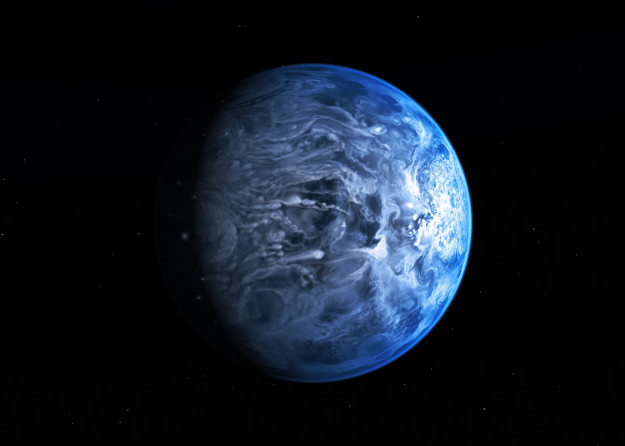
This illustration shows HD 189733b, a huge gas giant exoplanet that orbits very close to its host star HD 189733. The planet's atmosphere is scorching with a temperature of over 1000 degrees Celsius, and it rains glass, sideways, in howling 7000 kilometre-per-hour winds. At a distance of 63 light-years from us, this turbulent alien world is one of the nearest exoplanets to Earth that can be seen crossing the face of its star. By observing this planet before, during, and after it disappeared behind its host star during orbit, astronomers were able to deduce that HD 189733b is a deep, azure blue - reminiscent of Earth's colour as seen from space.
Credit: NASA, ESA, M. Kornmesser
Due to the limited speed of light, as we look at galaxies in the Universe we are seeing them as they were in the past. With deep (sensitive) observations of the Universe it should then be possible to see how the population of galaxies changes over time.
Beginning in 1994 Hubble embarked upon its field deep field, the eponymous Hubble Deep Field (HDF). Hubble collected images of the same area of the sky for more than 140 hours. Despite only covering 1/25 millionth of the sky the HDF contains thousands of galaxies stretching back over much of the Universe's history.
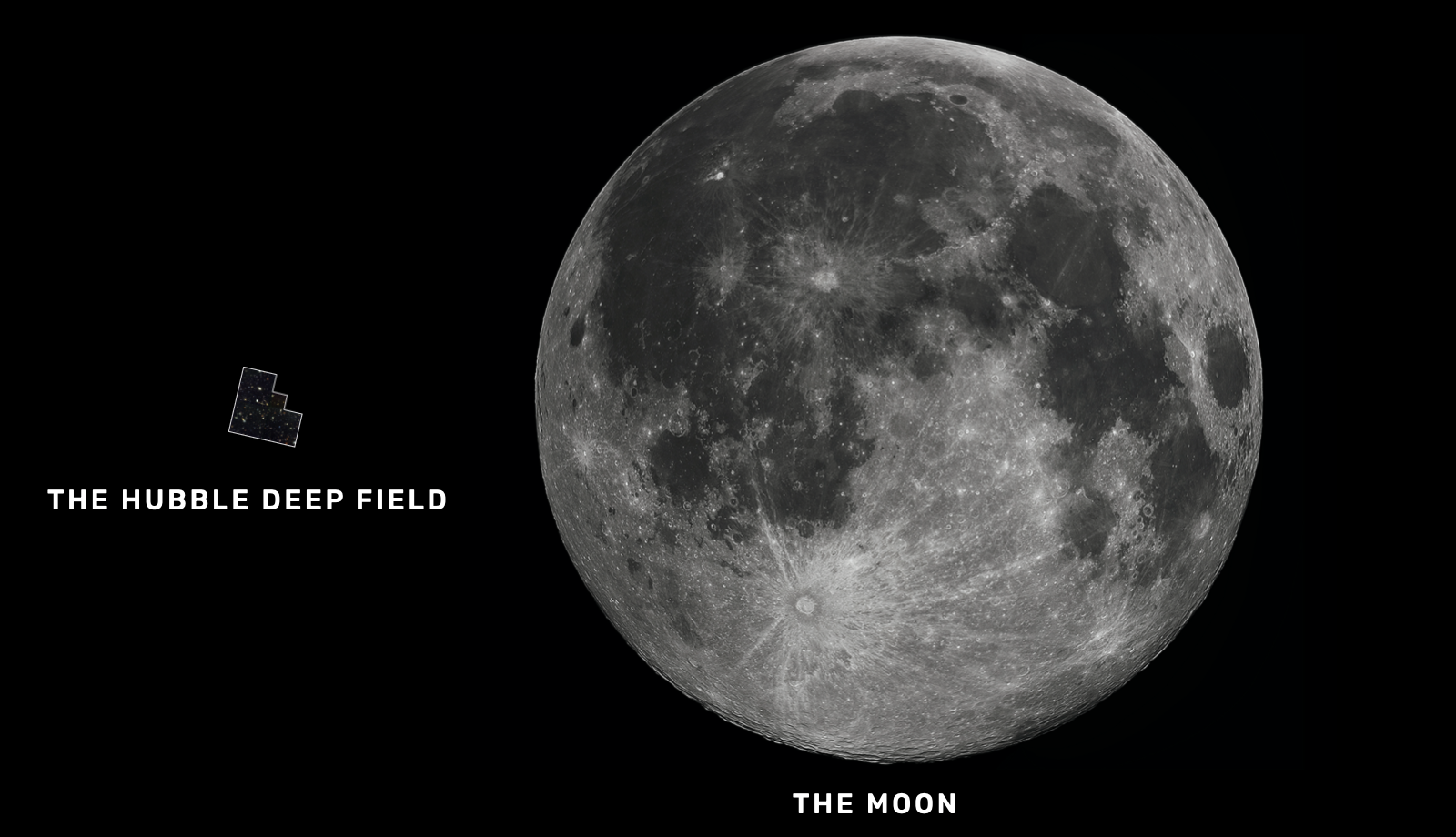
A comparison between the size of the Hubble Deep Field and the Moon. Credit: NASA, ESA, Stephen Wilkins.
With the installation of the Advanced Camera for Surveys (ACS) in 2002 Hubble embarked on a new deeper field, the Hubble Ultra Deep Field or HUDF. With the installation of Wide Field Camera 3 (WFC3) in 2009 both UV and new near-infrared imaging was added. Combined Hubble has observed the HUDF for more than 300 hours. Galaxies in the HUDF stretch back over around 95% of the Universe's histroy.
You can learn more about the deep fields by watching our lightning lecture. You can explore the HUDF using the interactive tool below - use your mouse to zoom into different areas.

Hubble's deepest view of the Universe, the Hubble Ultra Deep Field. Credits: NASA, ESA, G. Illingworth, D. Magee, and P. Oesch (University of California, Santa Cruz), R. Bouwens (Leiden University), and the HUDF09 Team. Original Source.
Hubble has also helped transform our understanding of how the Universe expands and what it contains: if the Universe only contained matter (and radiation) the expansion of the Universe should be slowing down due to the force of gravity. Using Hubble observations of distant supernovae scientists discovered that the expansion is actually accelerating.
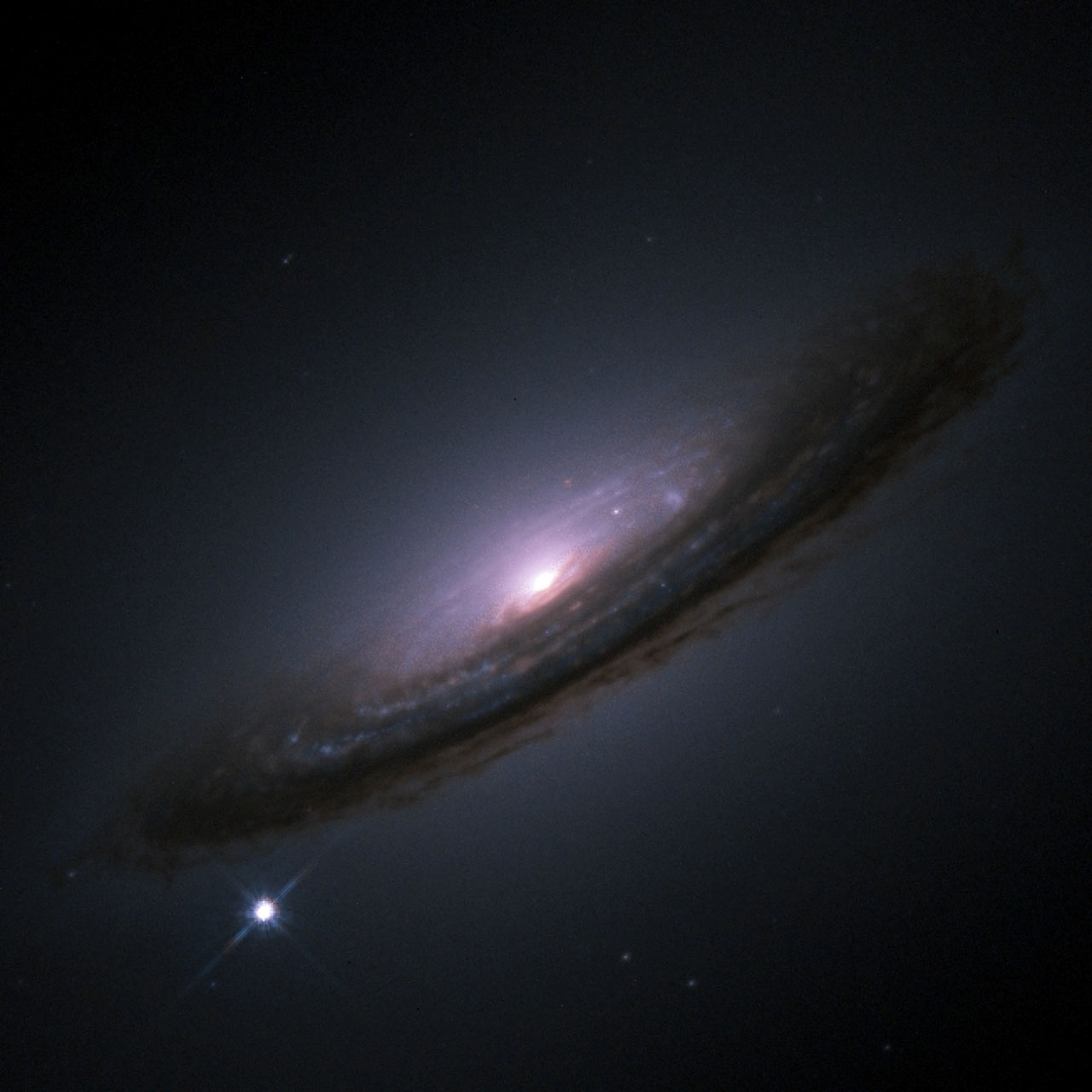
Hubble observation of the Supernova 1994D (SN1994D) in galaxy NGC 4526 (SN 1994D is the bright spot on the lower left). Observations of supernovae like this have shown us that the expansion of the Universe is accelerating. This has been attributed to Dark Energy, an unknown form of energy.
Credit: NASA/ESA
Today scientists still don't know what causes this accelerated expansion, though many attribute it to Dark Energy, an unknown form of energy. A huge of amount of research in astronomy and particle physics is dedicated to better understanding this phenomenon.

With the retirement of the Space Shuttle program in 2011, we no longer have means to maintain and upgrade Hubble. As Hubble orbits relatively close to the Earth its orbit will decay over time due to atmospheric drag. If not reboosted, it will re-enter the atmosphere within 20 years. If this re-entry is uncontrolled parts of the telescope could survive, leaving the potential for damage or even human casualities. While Hubble may no re-enter the atmosphere until the 2030s or 40s it is likely a mission critical piece of equipment will fail before then.
With the end of Hubble's mission drawing close, it will be succeeded by a new generation of space observatories with different capabilities to that of Hubble.
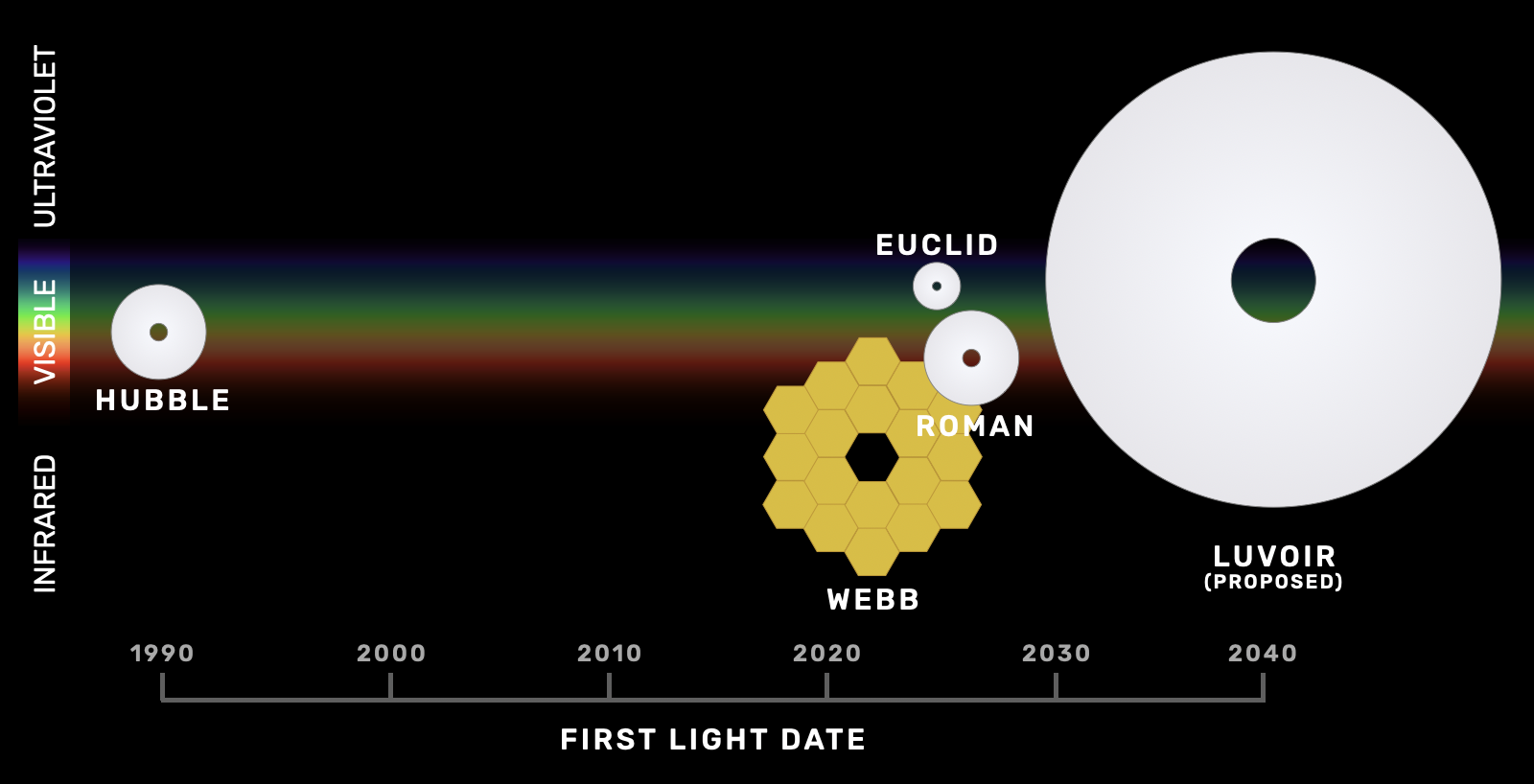
A comparison between the primry mirror size, launch date, and wavelength range of Hubble and its successors. Credit: Stephen Wilkins.
Hubble's most immediate successor is the James Webb Space Telescope - JWST or Webb. Webb is a 6m diameter (more than 5 times larger than Hubble) space observatory optimised for studying the near and mid infrared (0.7-24µm) wavelengths of light. Webb is an international collaboration and was designed and constructed by NASA, ESA, and the Canadian Space Agency. While Webb lacks the ultraviolet and visible capabilities of Hubble (alongside a much expanded infrared capabilities) it is a clear scientific successor to Hubble. Despite numerous delays Webb is expected to launch late 2021. To learn more about how Webb will transform our knowledge of the distant Universe click here.
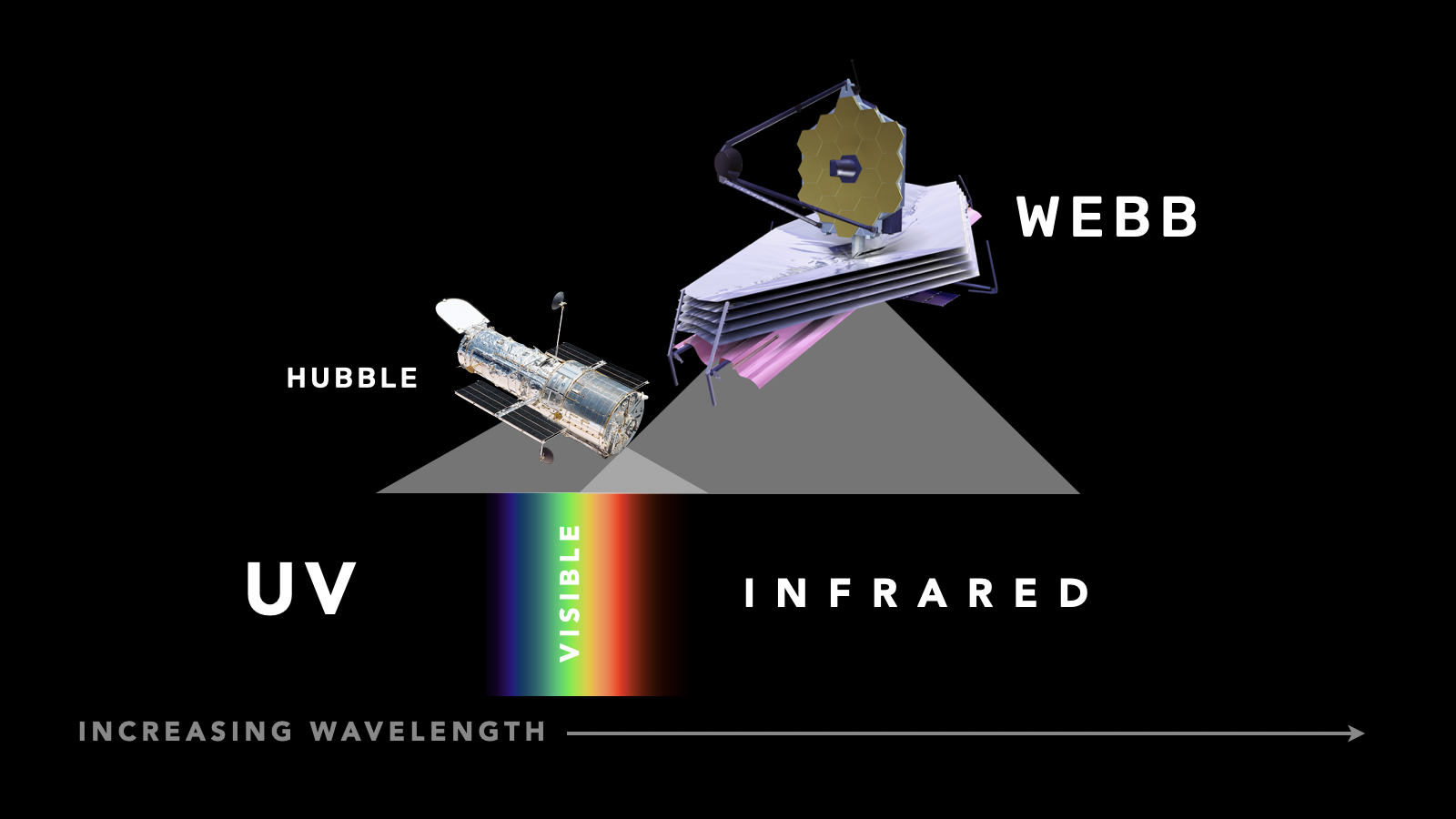
The wavelengths of light observable to Hubble and Webb. Credit: Stephen Wilkins.
Expected to follow the launch of Webb are ESA's Euclid and NASA's Nancy Grace Roman (Roman) Space Telescopes. Roman is almost identical in size to Hubble, however its primary instrument has a field-of-view 100 times larger than any of Hubble's. This makes Roman ideal for observing wide areas of the sky. Roman is able to observe both visible and near-IR light but lacks Hubble ultraviolet capabilities. Euclid is smaller, but similarly has a larger field-of-view and visible/near-IR capabilities and should launch sooner (2023).
Looking further into the future, NASA is exploring the concept of a UV - optical - near-IR telescope larger than Webb. This concept - the Large Ultraviolet Optical Infrared Surveyor, commonly known as LUVOIR - imagines a telescope either 8 or 15 m in diameter (10-40x larger than Hubble) with similar wavelength coverage. While LUVOIR is a concept for a general-purpose observatory, it has the key science goal of characterizing a wide range of exoplanets, including those that might be habitable. An additional goal is to enable a broad range of astrophysics, from the earliest stars and galaxies, through galaxy formation and evolution, to star and planet formation. If taken forward LUVOIR would have an expected launch date in the 2030s or early 2040s.

Over more than 30 years of operation Hubble has transformed our view of the Universe, enabling astronomers to study phenomenon ranging from within our own Solar System to some of the most distant objects in the Universe. Even today, Hubble remains one of our most productive and in-demand observatories with new discoveries being continously made.
Hubble will soon be joined in its quest to help us understand the Universe by new observatories, including the Webb Telescope launching later this year.
This app was designed and coded by Stephen Wilkins at the University of Sussex with contributions from Leigh Fletcher (Leicester) and Hannah Wakeford (Bristol).
Hubble's Legacy was developed and led by Stephen Wilkins at the University of Sussex with assistance from scientists at 10 other UK universities. Hubble's Legacy is also supported by the Science and Technologies Facilities Council.
The full code for the Hubble Legacy project can be downloaded from GitHub here.